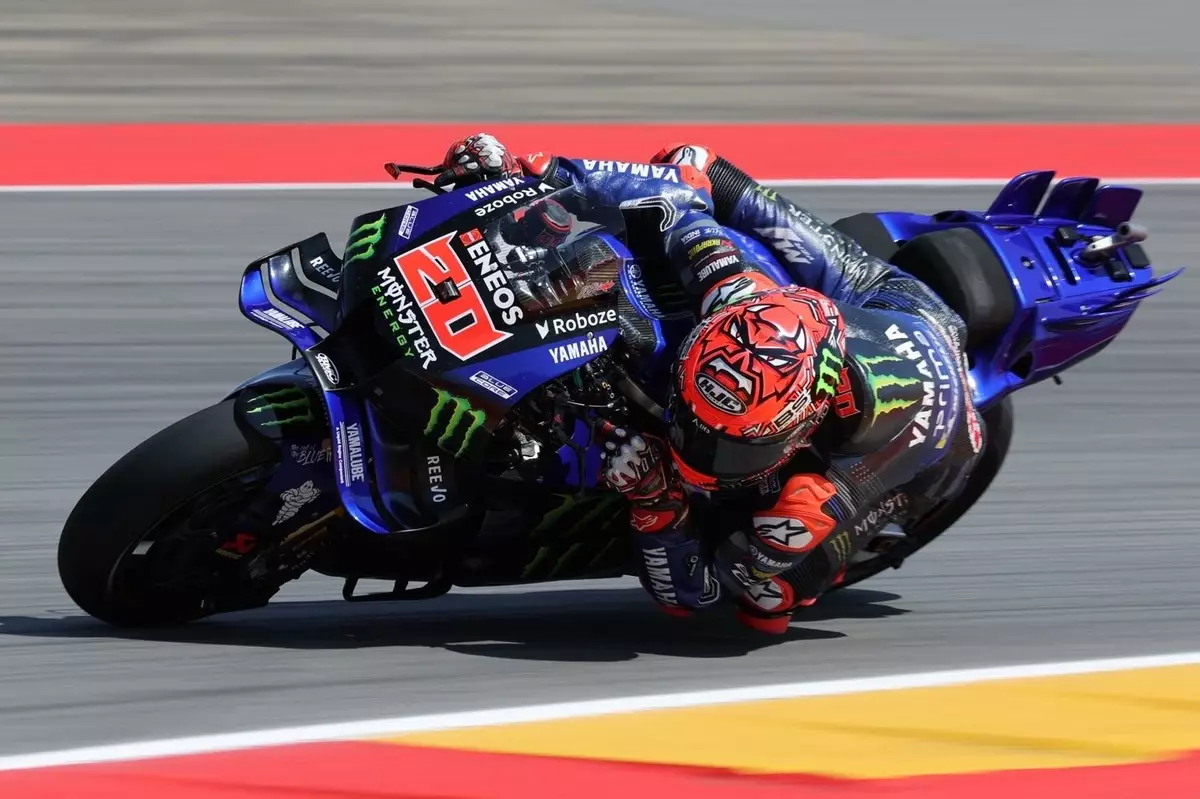As the MotoGP circus rolled into the low-grip Aragon circuit, a storm started brewing for Yamaha’s renowned YZR-M1 motorcycle. This track, with its notoriously treacherous surface, quickly stole the spotlight as a stage for showcasing the Yamaha machine’s alarming grip issues. Fabio Quartararo, the team’s lead rider and 2021 MotoGP champion, faced an uphill battle that seemed almost Sisyphean every time he took to the track. The concerns bubbled to the surface during Friday’s practice sessions, as the bike displayed an unsettling tendency to twitch and slide out of control during corner exits—a nightmare scenario for any racer.
Performance Disparities and Frustrations
It’s no secret that Yamaha’s performance was scrutinized intensely in the face of this arduous challenge. The speed trap times revealed a disheartening truth; Quartararo’s bike was not just lagging but trailing significantly behind competitors, clocking almost 10 kph slower than the KTM of Brad Binder. This sputtering acceleration can easily be attributed to the machine’s evident incapacity to effectively put the power to the ground, raising concerns over its design and functionality. Quartararo’s visceral frustration spilled onto the track as he gestured animatedly during his laps, embodying the struggle of a rider battling against his own machinery.
In reflection of the day, Quartararo expressed his vexation but also managed to retain a modicum of humor. He noted with a glint of sarcasm, “We almost made the pole position on the other side [at the back of the grid].” This blend of optimism amidst adversity speaks volumes about his character, yet the situation remained dire. He elaborated on the inexplicable electronic issues and the unpredictable nature of the bike’s behavior during critical moments. An inability to predict when the machine might lose grip left him feeling anxious and helpless—an unending cycle of frustration every time he mounted the bike.
Unraveling the Mystery of Electronics
As the day wore on and criticisms mounted, Quartararo made it clear that the groundwork—his bike’s setup—was entirely sound. “The set-up is good,” he asserted, firmly standing by his mechanics and their hard work. The problem, as he identified it, stemmed from the electronics and how they interact with the tires. “When we change rubber, it completely changes our bike,” Quartararo lamented, revealing a critical insight into the complications faced by Yamaha when adapting to differing track conditions and tire compounds. This emphasis on electronics elevates Yamaha’s predicament; it’s not a surface-level issue but a fundamental flaw in how the machine processes power delivery under varying conditions.
A Unified Struggle Within the Team
The struggle wasn’t limited to Quartararo alone. Yamaha’s team director, Massimo Meregalli, echoed the concerns expressed by his leading rider. Observing both Quartararo and Alex Rins suffer similar difficulties in maintaining rear grip, Meregalli highlighted the team’s collective frustration. “They are losing the rear a lot,” he pointed out, which emphasized that this was not merely a rider-specific challenge but a systemic issue affecting the whole unit.
His optimism at the outset of the session soon turned to concern as tire temperatures rose, leading to diminishing grip levels. “The grip dropped down even more than before,” he stated, illustrating how environmental variables could compound Yamaha’s problems further. Such reflections paint a vivid picture of a team grappling with not just technical woes but also the looming pressure of competition.
Seeking Solutions Amid Pressure
As all motorsport teams know, the pathway to improvement shines through diligent analysis and tireless determination. For Quartararo and his crew, the pressing need for a breakthrough solution resonates deeply. With the climbing clock and swiftly approaching races, the prospect of finding that crucial fix becomes ever more critical. In motorsport, particularly at the elite level, every fraction of a second counts, and the labyrinthine complexities of motorcycle setup can spell the difference between victory and disappointment.
In a sport marked by relentless pursuit of excellence, Yamaha stands at a crossroads. The time for action has come, and the stakes have never been higher. Quartararo’s resilience, laced with humor, provides a glimmer of hope. As the team rallies to address these issues, one can only envision how their response will unfold in the coming races, shaping not just their season but perhaps the legacy of Yamaha in the MotoGP arena.


Leave a Reply